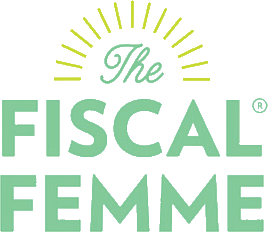Mitigate Spending Toxins
When it comes to our financial lives, we often focus on ourselves, but our environment and those around us play a big part in our actions - and often not for the better.
Environmental toxins are the people, places, and things that get the best of your spending. Maybe it’s a friend that you shop with that always encourages you to “treat yourself” or the store you tend to impulse shop online. It's not personal - it just means your spending gets off track when you’re together.
Environmental toxins can derail our goals, so even though we can’t always avoid them, we can try to mitigate them.
Why does it matter?
Environmental toxins can derail our goals. Sometimes the expense itself derails our goals and other times, it’s what happens after that does the most damage. Toxic spending can derail our spending for the rest of the day or even for weeks going forward.
Have you ever had this conversation with yourself after a purchase - “well, what’s another $15 when I just spent [insert purchase here]?”
What can we do about environmental toxins?
The first step to mitigating environmental toxins is to notice them. When your spending gets derailed, who’s there? Are there any people, locales, experiences, or types of items that are frequently involved in your toxic spending? To figure this out, we’re going to make a list of your environmental toxins and then come up with plans to deal with them powerfully.
We often think of impulse buys or toxic spending as large, expensive items, but they don’t have to be. If you are having a hard time thinking of your environmental toxins, remember that anything that we didn’t intend to spend money on that we regret later is toxic.
Make spending goals in toxic areas.
Once we’re aware of our toxic spending, we can mitigate it. In some cases we can (and may want to) avoid the person, place or thing altogether. That’s an easy solution.
But for many environmental toxins, we can’t or don’t want to.
It’s helpful to plan out an allocation or spending goal for each area that your toxic spending shows up. Let’s say you and your friend go out for drinks on a regular basis and that tends to be a toxic area for you. You might decide you want to spend $50 per week on drinks.
If a friend asks you to go out and you have room in your budget, great. You can decide if that’s where you want to spend your $50 this week. If you’ve already hit your limit, you might say no or suggest an alternative that’s less expensive.
We often feel powerless when it comes to how we spend our money with other people in social situations, but we get to choose exactly how we want to handle it.
Test out some strategies. If they don’t work, that’s okay. It can take time to find a system that works for you.
Reward yourself when you stick with the plan.
It’s important to create a reward system for when you stick to your plans. It might sound silly and frivolous to reward yourself, but you’d be surprised by how well rewards really work. Try it out and see!
If you stick to the plan, reward yourself with something small hat excites you.
How to navigate money and groups.
Group activities are a common environmental toxin. The total cost can often feel out of our control, and whatever we’re doing usually ends up costing a lot more than we expect.
As with anything else, make sure to include group events in your budget (or happiness allocation). I recommend adding a buffer of 10-20% to what you expect the activity to cost. I call this the group tax! It’s much better to overestimate in advance than to stress over it and miss out on the joy of the event itself.
If the group activity doesn’t fit into your budget or happiness allocation, you can say no. You may decide to only do one group activity per month and prioritize an activity with your closest friends.
It’s all about priorities and planning, so make the decision that’s best for you.


